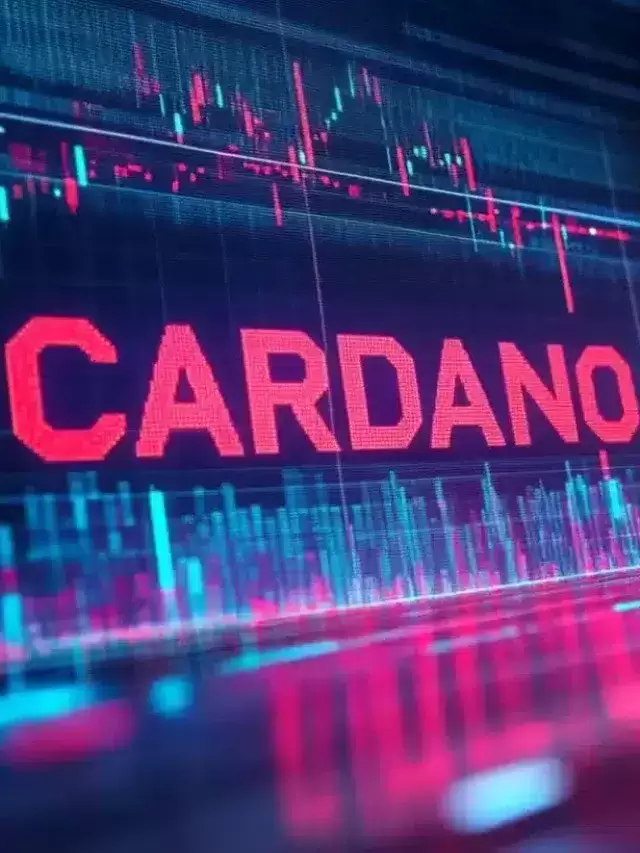 |
|
 |
|
 |
|
 |
|
 |
|
 |
|
 |
|
 |
|
 |
|
 |
|
 |
|
 |
|
 |
|
 |
|
 |
|
长期以来,比特币被称为数字黄金,这是一个安全的价值存储和简单的点对点支付网络。但是,它的基层不是

Bitcoin OS is a project that aims to bring smart contracts, tokenization, and advanced programmability to Bitcoin in a modular, efficient, and community-driven manner. It is not an altcoin or a fork but rather a set of technologies and initiatives that expand the capabilities of Bitcoin without altering its core protocol.
比特币OS是一个旨在以模块化,高效且以社区为导向的方式将智能合约,令牌化和高级可编程性带入比特币的项目。它不是Altcoin或叉子,而是一组技术和计划,可以扩大比特币的功能而无需更改其核心协议。
One of the main components of Bitcoin OS is the use of rollups, which are off-chain protocols that can process transactions or smart contracts and then bundle them into proofs to be verified and posted to the Bitcoin blockchain. This allows for a significant increase in throughput and reduces the load on Bitcoin's limited block space.
比特币OS的主要组成部分之一是使用汇总,它们是可以处理交易或智能合约的链协议,然后将它们捆绑成证明,以验证并将其发布到比特币区块链上。这样可以显着增加吞吐量,并减少比特币有限块空间上的负载。
Some of the key features of Bitcoin OS include:
比特币OS的一些关键功能包括:
* Smart contracts and DApps on Bitcoin, enabling the creation of decentralized applications and the execution of complex scripts.
*智能合同和比特币上的DAPP,从而可以创建分散的应用程序和复杂脚本的执行。
* Scalable rollups that can handle hundreds or thousands of transactions per second, settling back to Bitcoin with optimal security.
*可扩展的汇总每秒可以处理数百或数千笔交易,并以最佳的安全性安置回比特币。
* Trustless cross-chain bridges that let Bitcoin interact with other blockchains (and vice versa) without centralized custodians.
*无信任的跨链桥,让比特币与其他没有集中托管人的其他区块链(反之亦然)相互作用。
* Programmable tokens with built-in logic for governance, staking, and more, surpassing the limited BRC-20 tokens seen so far.
*具有内置逻辑的可编程令牌,用于治理,占有等,超过了迄今为止看到的有限的BRC-20令牌。
* Options for private or anonymous transactions using zero-knowledge proofs, preventing observers from snooping on all your financial activity.
*使用零知识证明的私人或匿名交易的选项,以防止观察者在所有财务活动上窥探。
* Introduction of covenants, which are advanced script conditions for how coins can be spent, enabling new Bitcoin use cases.
*引入盟约,这是用于花费如何花费的高级脚本条件,可以实现新的比特币用例。
* A unified ecosystem where multiple blockchains and rollups can interact seamlessly, making it feel like one connected network of value.
*一个统一的生态系统,其中多个区块链和滚动可以无缝交互,使其感觉就像一个连接的价值网络。
These capabilities make Bitcoin OS akin to a "Bitcoin 2.0" environment - not by replacing Bitcoin, but by building on it and opening up new possibilities for the future of the cryptocurrency.
这些功能使比特币OS类似于“比特币2.0”环境 - 不是通过替换比特币,而是通过建立比特币并为加密货币的未来打开新的可能性。
Here are some of the challenges and opportunities that Bitcoin OS faces:
以下是比特币OS面临的一些挑战和机遇:
* Security and trust model: Bitcoin OS aims to be trustless or trust-minimized, but users and developers need to understand its assumptions before testing it. While zk-SNARKs are powerful, Bitcoin's main chain currently doesn't verify these proofs, meaning Bitcoin OS protocol and its participants handle verification. Bitcoin miners will treat the proofs like any other data and won't reject an invalid proof on their own. In practice, Bitcoin OS nodes would reject the bad state, requiring a majority of participants to collude for it to persist. Developers will need to audit and improve this trust model over time, potentially introducing native ZK verification via a Bitcoin soft fork, but this is still speculative. For now, "nearly trustless" describes its nature, offering a better alternative to relying on a single custodian, but users should understand the system.
*安全性和信任模型:比特币OS的目标是无信任或信任最小化,但是用户和开发人员在对其进行测试之前需要了解其假设。尽管ZK-SNARKS功能强大,但比特币的主链目前尚未验证这些证明,这意味着比特币OS协议及其参与者处理验证。比特币矿工将像其他任何数据一样对待证明,并且不会自行拒绝无效的证据。在实践中,比特币OS节点会拒绝不良状态,要求大多数参与者合谋继续下去。开发人员将需要随着时间的推移审核和改善此信任模型,并可能通过比特币软叉引入本机ZK验证,但这仍然是投机性的。就目前而言,“几乎没有信任”描述了其性质,为依靠单个保管人提供了更好的替代方法,但用户应该理解该系统。
* Performance and cost: Generating zero-knowledge proofs and managing rollups is computationally expensive. Developers might face limits on how much they can do in one proof or how often they can post proofs (e.g., one per Bitcoin block). They also need to consider the cost of Bitcoin transactions since limited block space can become expensive if demand rises. Bitcoin OS aggregates many actions into one transaction to reduce this cost. Still, if usage explodes, there could be competition for that block space among multiple rollups. Solutions like data compression, proof aggregation (multiple rollups combining proofs into one, which BOS intends to do) or even Bitcoin scaling improvements (like bigger blocks or a soft fork for more space) might come into play. It's an area to watch: ensuring that the main chain can handle the additional data load from potentially dozens of rollups posting proofs.
*性能和成本:生成零知识证明和管理汇总在计算上很昂贵。开发人员可能会在一个证明或可以发布证据的频率中面临限制(例如,每个比特币块)。他们还需要考虑比特币交易的成本,因为如果需求增加,有限的块空间可能会变得昂贵。比特币OS将许多操作汇总为一项交易,以降低这一成本。尽管如此,如果用法爆炸了,可能会在多个汇总之间引起该阻滞空间的竞争。诸如数据压缩,证明聚合(将证明组合为一个打算这样做的多个汇总)等解决方案可能会发挥作用(例如,更大的块或软叉以获得更多空间)。这是一个值得关注的区域:确保主链可以处理潜在的数十个汇总发布证明的额外数据负载。
* User experience: For average users to adopt Bitcoin OS-powered services, the experience needs to be smooth. This means good wallets that can handle rollup transactions, easy bridging UIs, and abstracting away the complexity of proofs and L1 vs. L2. Developers will need to integrate Bitcoin OS into popular wallets or interfaces, similar to how some mobile wallets integrated Lightning, allowing users to see "Bitcoin" while the app decides whether to route via Lightning or on-chain. Education is also key - users should understand what it means to use a rollup versus the main chain. Over time, if done right, users might just think they are using Bitcoin but with more features.
*用户体验:对于普通用户采用比特币OS驱动服务,体验需要平滑。这意味着可以处理汇总交易,易于桥接UI的好钱包,并抽象出证明的复杂性和L1 vs. L2。开发人员将需要将比特币OS集成到受欢迎的钱包或接口中,类似于某些移动钱包集成闪电的方式,从而使用户可以看到“比特币”,而该应用程序决定是通过闪电还是链链路路线。教育也是关键 - 用户应该了解使用汇总与主链的含义。随着时间的流逝,如果做得正确,用户可能会认为他们正在使用比特币,但具有更多功能。
* Competition and collaboration: Bitcoin OS is not the only approach to extending Bitcoin. There are other Layer-2s and sidechains (e.g., Lightning for payments, Stacks for smart contracts with its own token, Liquid for asset issuance) and new proposals like drivechains that aim to enable sidechains via miners. The crypto community can be tribal, and new tech sometimes faces skepticism. Bitcoin OS will need to prove its value and possibly coexist or integrate with other solutions. For example, users can utilize Lightning for instant payments and BOS for complex contracts, allowing each to complement the other. Or, drivechains (if ever activated) provide another avenue for sidechains that might interplay with BOS. The success of Bitcoin OS may well depend on community support and real use cases that demonstrate its superiority or uniqueness.
*竞争与协作:比特币OS并不是扩展比特币的唯一方法。还有其他第2层和侧级(例如,付款的闪电,具有其自身令牌的智能合约的堆栈,用于资产发行的液体)以及诸如Drivechains之类的新建议,旨在通过矿工启用Sidechains。加密社区可以是部落,新技术有时会面临怀疑。比特币OS将需要证明其价值,并可能与其他解决方案共处或集成。例如,用户可以利用闪电进行即时付款和BOS进行复杂的合同,从而使彼此补充。或者,Drivechains(如果被激活)为可能与BOS相互作用的Sidechains提供了另一条途径。比特币OS的成功很可能取决于社区支持和实际用例,这些案例表现出了其优越性或独特性。
* Regulatory and
*监管和
免责声明:info@kdj.com
所提供的信息并非交易建议。根据本文提供的信息进行的任何投资,kdj.com不承担任何责任。加密货币具有高波动性,强烈建议您深入研究后,谨慎投资!
如您认为本网站上使用的内容侵犯了您的版权,请立即联系我们(info@kdj.com),我们将及时删除。
-

-

- 加密ETP上周看到的谦虚流入,从创纪录的流出段中延伸了逆转
- 2025-04-06 23:25:12
- 上周,加密货币交易所交易产品(ETP)继续看到适度的流入,从创纪录的流出曲折中逆转了逆转。
-

- Dogecoin(Doge)在过去24小时内下滑了6%
- 2025-04-06 23:20:12
- 这是在埃隆·马斯克(Elon Musk)澄清的原因下,基于模因的数字资产将不会用于美国政府使用。
-

-

- 比特币表现出一定的弹性
- 2025-04-06 23:15:12
- 比特币显示出一种韧性水平,使许多市场观察家感到惊讶,尤其是面对更广泛的市场抛售。
-

-

-

-

























































